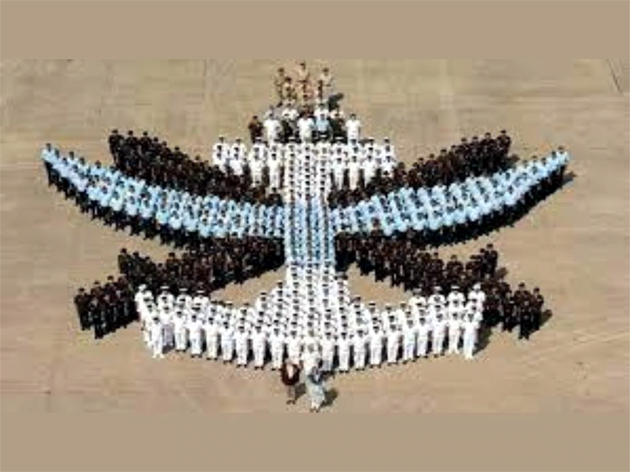Vijay Singh Bali
What is theaterisation of forces? why we need it? what are the challenges of Integrated Theatre Commands (ITC) and key features of the bill?
What does Theaterisation of forces or Integrated Theatre Commands means
It is a military concept that seeks to integrate the capabilities of three services under one theatre commander so that resources can be optimally used during any war and particular geography can be secured,. in this context ,GOI is thinking of ITC as a step towards military modernisation where the resources of Army ,Navy and Airforce will be under one theatre command. Many great military theorists like Clausewitz believed in the jointness and coordination among the forces for efficiency at operational level.
After independence India’s armed forces formulated a ‘single service strategy’ in defence policy i.e. each services had its own doctrines and war strategy instead of a single defence strategy . Our coordination between the forces(Airforce ,navy and army) was incidental rather than planned ,for instance during 1965 war with Pakistan ,aerial power was called on only at later stages, same case was with China during 1971 war .As we are facing ”Two and Half Front war”, here two front war means the simultaneous war with Pakistan and China and half front refers to the insurgency in Kashmir during the war , therefore it becomes necessary that there is smooth coordination between the forces. In this context, recently Parliament passed the ”interservice organisation (command, controlman and discipline) Bill 2023, which gave legal backing to theaterisation of forces
Why we need of Integrated Theatre Commands (ITCs)
* According to Kargil review committee, one of the reason of high causalities during Kargil war was due to lack of cooperation among the 3 services , having India Integrated Theatre Command (ITC),this could have been avoided.
* Currently we have about 17 commands(Airforce =7, army=7 and navy =3),this reduces the coordination and effectiveness among the forces during the strategic military operations
* India is surrounded by two hostile neighbours in the form of China and Pakistan ,there has been speculations into India’s strategic thinking about chances of two front war,as China has 5 theatre command, therefore, it us very important for us to have specific theatre command for effective coordination India and synergy among the forces ,thus promoting synchronised operations
* It will reduces the cost of defence procurement and avoiding duplication of resources among the forces , for instance, in 2018 IAF procured 22 Appaches whereas army procured 6 choppers ,which resulted in loss of 2500cr due to haphazard planning.
* Lesson from great powers ;one of the major reasons of success of American global hegemony from bipolar to multipolar world is due to jointness among the forces at strategic and operational levels,
* Securing India’s territory ;according to defence review committee, China is going to complete its dream of Greater China through its ‘Palm and Five finger ‘policy till 2039, here Palm refers to complete annexation of Tibet and five fingers refers to annexation Arunachal Pardesh (Tawang),Taiwan ,Nepal. Bhutan and Ladakh, therforce it is necessary for India to have jointness in the military doctrines and operational levels during any attack by adversaries
It will help in timely and efficient decision making as single commander will be responsible for taking decision during military operations or two front war .
* India has currently only two tri services command, the Andaman and Nicobar Command (ANC) responsible for securing India’s strategic interests in southeast Asia and around strait of Malacca and Strategic Forces Command (SFC) ,which is responsible for our nuclear assets,our experience with both ITCs show the effectiveness of jointness among the forces
* It will improve the information sharing among the services which was the biggest hurdle in our forces.
What are likely ITCs
GOI has not issued any documents about ITC, however, according to sources ,three new command will be established in upcoming months ,as per the plan the first theatre command will be established at Jaipur knowns as South Western Commnad (SWC) which will be responsible for safeguarding the western front (Pakistan),the other ITC will be based on the Lucknow, having Karnataka ,which will look after the maritime front .the number of ITC has reduced from 5 to 3 due to lack of consensus among the three services.
CHALLENGES
Dilution of powers of services chiefs due to creation of commander in chief post who will have more control over decision making in ITC.
In initial phase , it will be difficult for forces to work with synergy due to limited experience of working together.
It will have budgetary implications
Key features of the bill
* It gives power to Central Government for constituting inter services organisation ,therefore indirectly gives a way for creation of of ITC and Commander -in -chief shall be the head of such inter- services organisation .
* It gives powers to heads of ITC to take the all administrative and disciplinary action against the personnal irrespective of their services
* The Central Government has superintendence and may issue directions related to national security, general administration ,or public interest .
As we are moving towards hybrid warfare, we need synchronization and synergy among the forces so that we can achieve the dream of ‘One Border and One Force’. ,the current ongoing military reforms should not be just limited to theaterisation of forces .but more on developing comprehensive National security strategy if India has to become Great power within the Amrit Kaal.
Trending Now
E-Paper


